21 Unique Cedar Fence Ideas from Our Favorite Central Texas Projects
If you’re considering a new cedar fence to protect the privacy of your home…

If you’re building a deck, you have a myriad of materials to choose from. Two popular options are cedar and composite decking. While similar, these materials have pros and cons to consider to determine which is the right choice for your Austin home, goals, and climate.
For example, cedar decks have a more natural look and are cheaper in both materials and construction. They’re also more environmentally friendly. Conversely, composite decks are more durable, require less maintenance, and last longer. They’re also fire-resistant and can be designed to look like real wood.
Cedar
Composite
Get a quote for your new deck!
Not sure which material is the right choice for your deck? Check out this comparison guide to weigh the pros and cons.
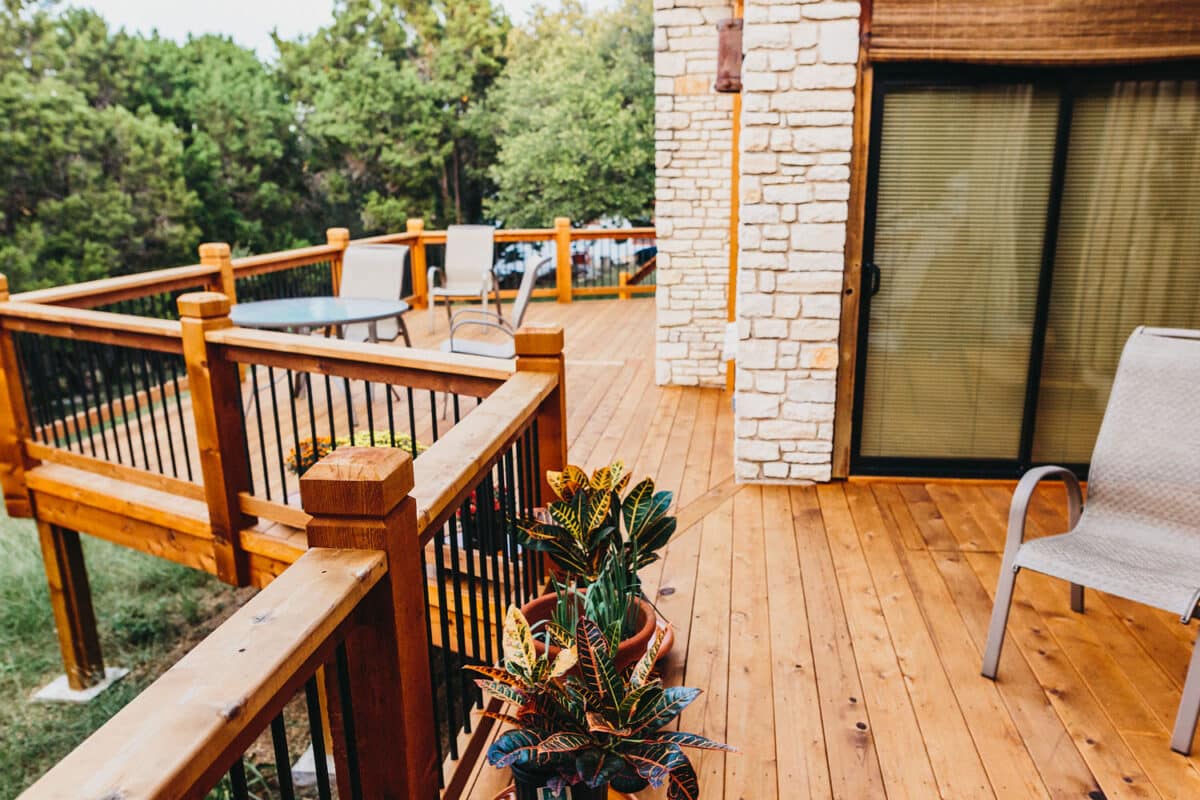
Cedar is a high-grade premium softwood that guards against sun, rain, decay, and temperature extremes. This beautiful wood has a range of color tones and can be sawed, sanded, and stained to the desired finish.
Depending on your taste, you can find cedar in different textures, dimensions, and grades. It has no resin or pitch, so it’s easy to stain and get the look you’re going for. However, it’s soft and can scratch more easily than other types of wood.
There are many benefits to cedar. While it’s more expensive than some types of wood, it’s an affordable option overall. It’s also environmentally friendly, sustainable, biodegradable, and infinitely renewable with virtually no greenhouse gas emissions.
Cedar decking can be high maintenance, however. You have to clean and reseal it every few years. Ultimately, cedar will last about 15 to 20 years with care before it needs to be replaced. It’s vulnerable to wear and tear and fire as well.

Composite decking comes from a mix of organic and synthetic materials, such as plastic and chemical additives. Most composite is made from recycled plastic and wood chips or sawdust, but it’s more durable than cedar decks.
Composite decking can be expensive, but it comes in an array of colors and has a long lifespan. If you want a low-maintenance deck, composite only needs to be hosed off regularly. It can be designed to look like wood and build sustainably, though it’s not as environmentally friendly as cedar.
While you don’t need to worry about splinters, composite decking can be extremely hot in direct sunlight and may be uncomfortable to walk on. When it’s wet, it can be slippery.
The brand or supplier of the material used for composite decking is a game changer when it comes to quality and durability. Austex is an official TimberTech partner for premium composite deck options that mimic the look of real wood with all the benefits of composite material.
Still not sure what’s right for you? Let’s break down each characteristic of cedar and composite decks.
| Cedar | Composite | |
|---|---|---|
| Durability | ✔ | |
| Longevity | ✔ | |
| Cost | ✔ | |
| Maintenance & Care | ✔ | |
| Sustainability | ✔ | |
| Safety | ✔ |

Composite decking is more durable than cedar. Once installed, it won’t splinter, rot, or warp, but it can sag. It resists rot, water, insect and rodent damage, and other hazards that can compromise wood decks.
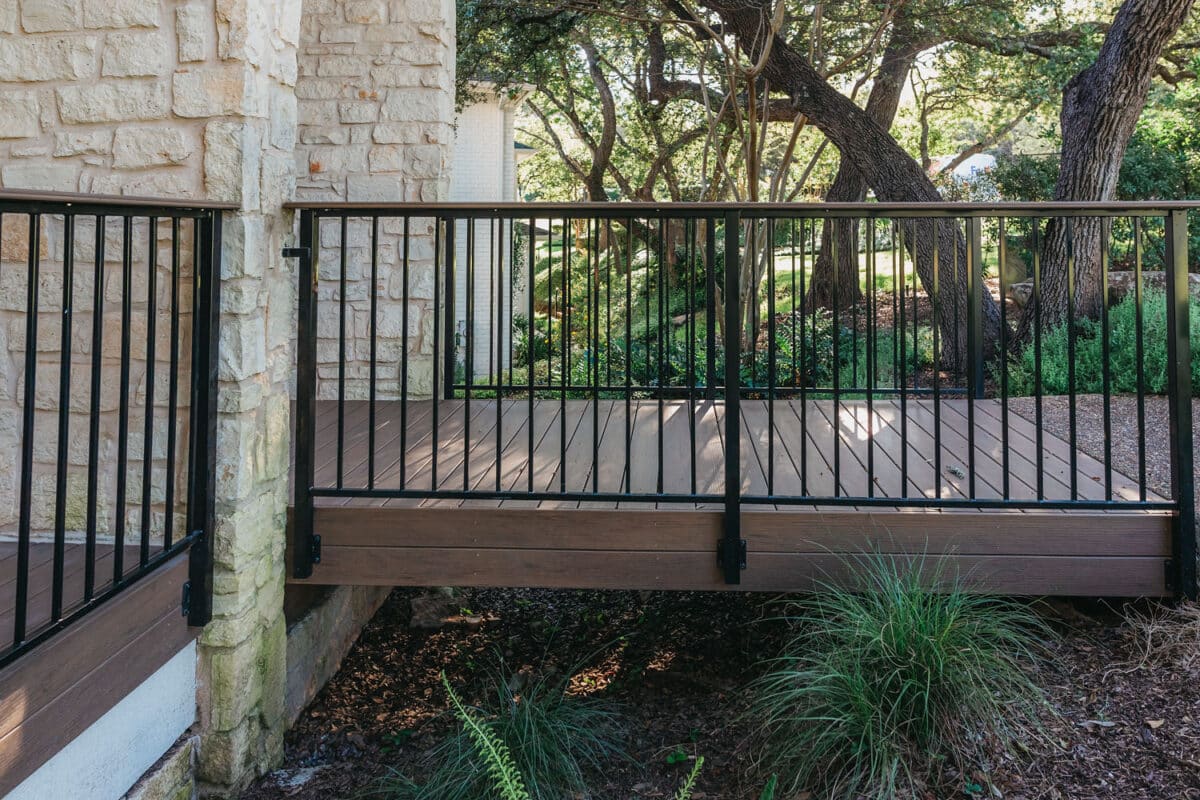
With proper care, composite decks can last 30 to 50 years compared to 15 to 20 years for cedar. Because the material isn’t prone to damage from the elements, fire, or critters, it’s less likely to develop issues that will require repair or replacement like a cedar deck.
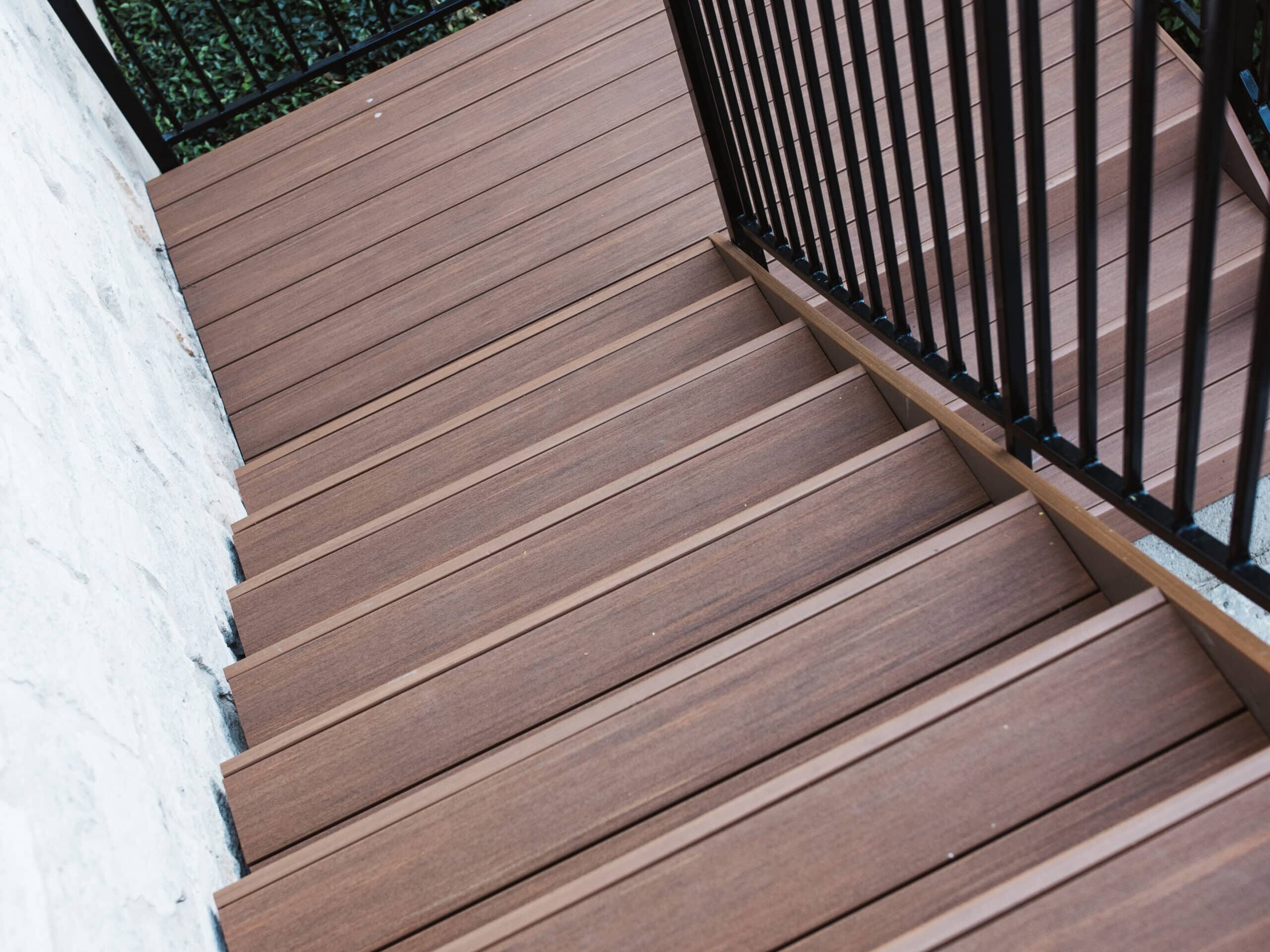
Cedar decking is more affordable than composite, but it comes with tradeoffs. Cedar takes more work to maintain and doesn’t last as long as composite decks. It’s also more prone to damage from the sun, water, extreme temperature changes, and insects or rodents.

Composite decking is lower maintenance than cedar decking. All you have to do is clean the composite to keep it looking nice and it won’t splinter or crack. Cedar decks need to be sanded, stained, and sealed every few years and may need repairs. Cedar is also soft and may scratch easily.
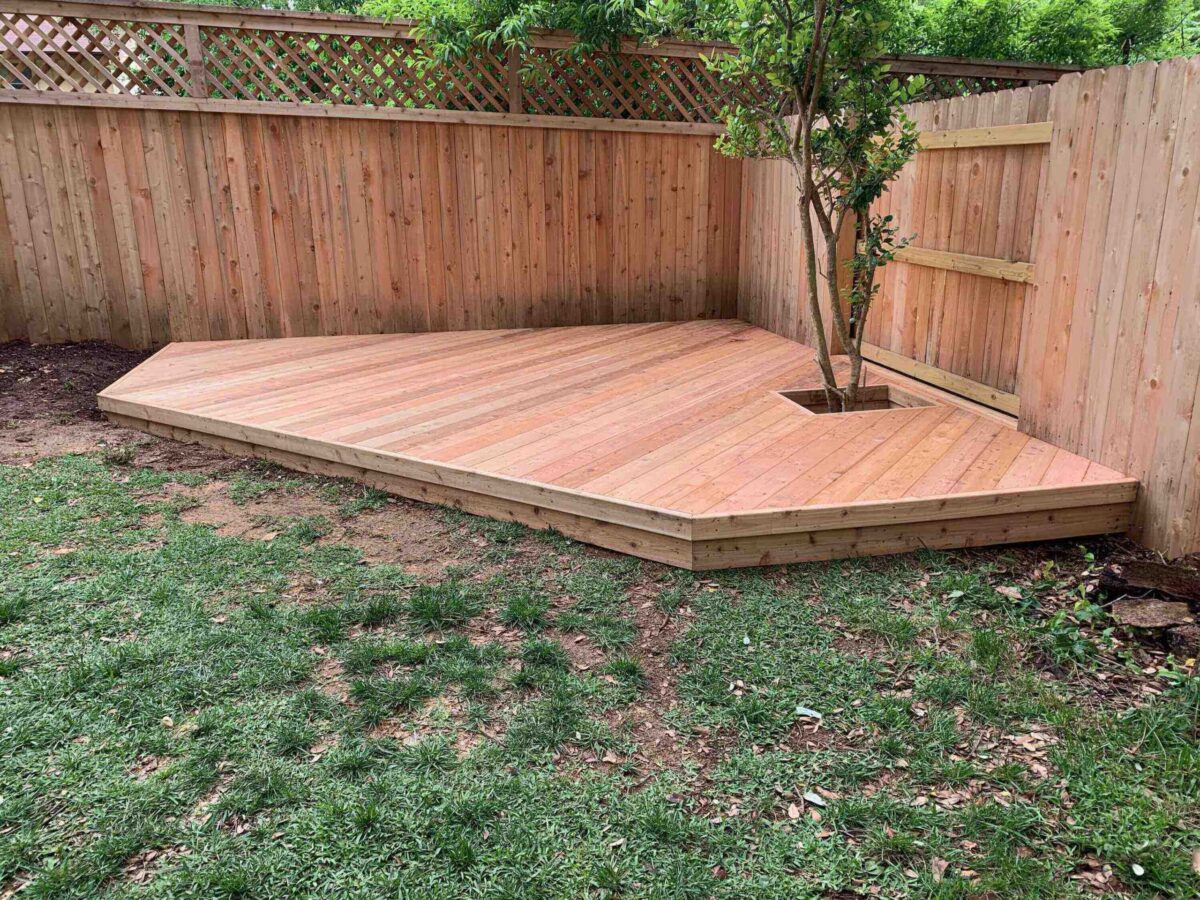
Cedar decks are more sustainable than composite decks. It’s also environmentally friendly, sustainable, biodegradable, and infinitely renewable with virtually no greenhouse gas emissions. While composite decking can be made sustainably using recycled materials, it’s the less eco-conscious option.
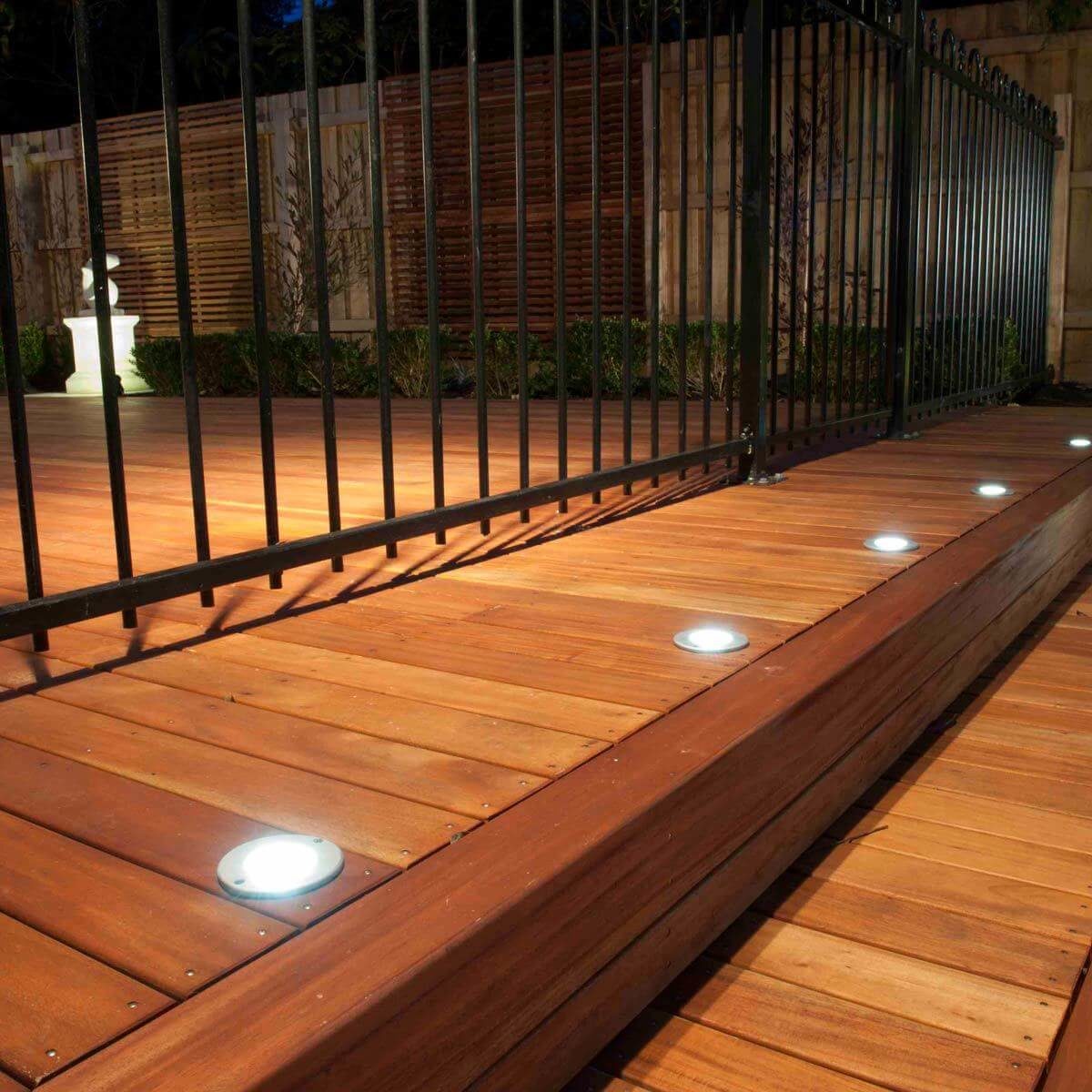
Cedar decks can be prone to splitting, splintering, warping, and cracking, which can be a safety hazard. You have to maintain cedar decks to ensure that they’re not dangerous. While composite can get hot and may be slippery when wet, it doesn’t develop problems like rot or splinters.
Both composite and cedar decks have their pros and cons depending on your needs. If you want an affordable, eco-friendly option and enjoy the beauty of natural wood, but you’re willing to put effort into maintenance and repairs, cedar may be the best choice. You have to stay on top of caring for cedar and fixing splinters or rot when it happens, however.
If you want a durable option that will last decades and mimics the look of natural wood, composite is a great option. Though more expensive upfront, composite decks require little maintenance over their lifespan and aren’t vulnerable to damage from the elements or other hazards. Though composite is less eco-friendly than cedar, it can be made from recycled materials.
Whichever you choose, you’ll get the most out of your deck with a professional installation. Fill out a form or call Austex Fence and Deck to discuss your new deck and get a free estimate!